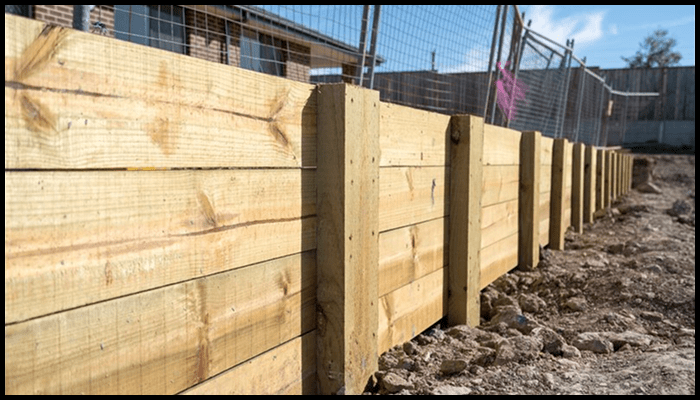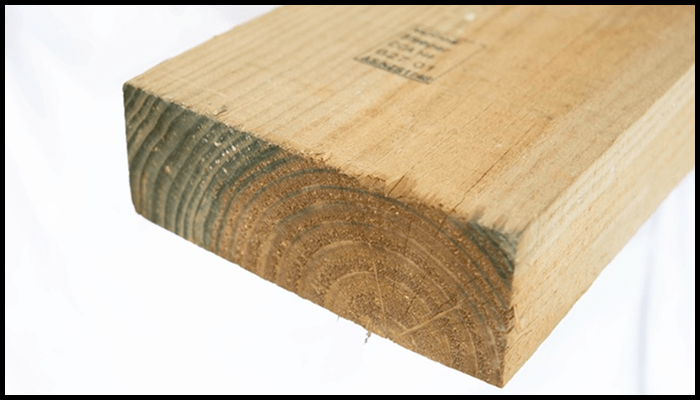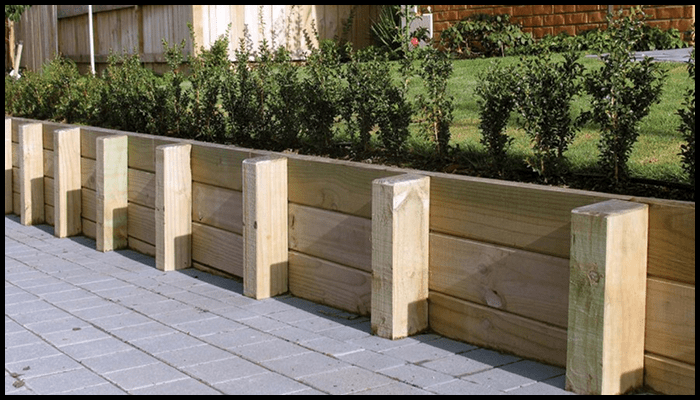Are Treated Pine Sleepers Termite Resistant?
Table of Contents:
-
What Are Treated Pine Sleepers?
-
How Are Treated Pine Sleepers Made Termite Resistant?
-
Are Treated Pine Sleepers Fully Termite Resistant?
-
Comparing Treated Pine Sleepers to Other Timber Products
-
Best Practices for Using Treated Pine Sleepers in Outdoor Projects
-
Conclusion: Is Treated Pine an Excellent Choice?
-
Frequently Asked Questions
Treated pine sleepers are a fashionable and commonly used material for different types of outdoor projects like retaining walls and garden beds. But one of the biggest worries potential users have about them is "durability".
Do treated pine sleepers stand up to these pests, and if so, for how long? Insects aside, how do treated pine sleepers hold up over time?
When you’re planning a landscaping project or using timber products for construction, it’s essential to grasp the making of treated pine sleepers, the kinds of protection they afford, and how they stack up against other materials in the building world.
This guide will take you through all the basics about treated pine sleepers and termite resistance.
What Are Treated Pine Sleepers?
Treated pine sleepers are wooden sleepers that have been preserved to be against decay, fungal damage, and insect attack. They are used commonly in various applications, which include:
• Retaining walls
• Garden edging and garden beds
• Fence posts and structural timber
• Outdoor furniture, picnic tables, and treated pine decking
• Landscaping projects for both residential and commercial buildings
The timber sector greatly benefits from the use of pine because it is a fast-growing tree that is simple to handle. But because pine is a softwood, it naturally resists neither moisture nor termite infestation.
That's why treatment with chemicals is super important for long-term durability.
How Are Treated Pine Sleepers Made Termite Resistant?
To increase their longevity and make them more structurally sound, treated pine sleepers must undergo a pressure treatment process.
This method uses high pressure to drive a preservative solution deep into the timber fibres, making the sleepers resistant to a couple of common enemies: termites and the fungi that cause wood to rot.
Timber treatment varies according to intended use, and there are different levels of it. For applications near ground contact—such as retaining walls and garden edging—sleepers must conform to Australian Standards.
The purpose of these requirements is to ensure that the timber is safe for outdoor use.
The treatment process most commonly uses these preservatives:
• Copper chrome arsenate (CCA): A common, well-used chemical solution that protects against termites, fungi, and rot.
• Chromated copper arsenate (CCA): A variation of CCA that gives excellent termite protection for timber that is in ground contact.
• Copper azole: A replacement that is more environmentally friendly compared to others, which is used in some outdoor furniture and construction needs.
• Preservative solution that is light in organic compounds (LOSP): A good choice for timber framing and structural timber, but use caution if it is in contact with the ground.
Each of these preservatives provides a different level of treatment, assuring that the timber stays durable even in the most severe weather conditions and retains its natural look & appearance.
Are Treated Pine Sleepers Fully Termite Resistant?
While treated pine sleepers provide a strong defence against termites, they are not a timber product that can claim to be totally resistant to termite attacks.
The effectiveness of protection against termite incursions depends on several factors, including the following:
1. Level of treatment: Sleepers with higher treatment grades are more resistant to termite damage.
2. Ground contact: Timber in direct ground contact requires treatment more intensely than timber used above ground.
3. Regular inspections: Looking for indicators of termite infestation helps avert serious problems down the road.
4. Environmental factors: Locations that experience high moisture levels or are near freshwater may need extra control measures in place to manage their termite populations
In general, treated pine sleepers are an excellent choice for outdoor space. They offer good durability and decent resistance against rot and termites. Still, the proper installation and maintenance of pine sleepers greatly influence how long they last.
Comparing Treated Pine Sleepers to Other Timber Products
When choosing between treated pine sleepers and other construction materials, it's helpful for you to consider how well they stand up to termites.
Treated Pine vs. Untreated Timbers
Timbers that haven't been treated, like raw pine or hardwood sleepers, are very likely to suffer from termite infestations.
They have no kind of chemical barrier at all, which makes them an unsuitable choice for ground-level use, such as in simple retaining walls or even structural timber framing.
Treated Pine vs. Concrete Sleepers
Concrete sleepers resist termites entirely and do not need to be treated with chemicals. However, they usually cost more expensive and do not have the natural beauty of timber products.
Treated Pine vs. Hardwood Sleepers
Certain hardwood species are naturally resistant to termites and fungal decay. However, they can be considerably more pricey, weightier, and more difficult to cut than treated pine sleepers.
For the vast majority of landscaping work, treated pine sleepers represent the best equilibrium between price, sturdiness, and usability in one package.
Best Practices for Using Treated Pine Sleepers in Outdoor Projects
To extend the lifespan of treated pine sleepers in outdoor spaces, these best practices should be followed to yield surprising results:
• Select the appropriate treatment level: Sleepers used in ground contact should meet the relevant Australian Standard for termite protection.
• Sound installation methods: Use every effort to keep the sleepers away from direct contact with soil. A well-drained base of gravel or concrete is preferable to direct installation in the earth.
• Use additional materials if necessary: If you suspect that the area where you want to install the sleeper may be attacked by termites, consider using a combination of treated wood and steel reinforcements for better protection.
• Carry out consistent inspections: Regular checks for signs of termite damage, excessive moisture, and wood rot can head off very expensive repairs.
If you follow these steps carefully, you can have long-term, cost-effective landscaping and construction solutions that utilize treated pine sleepers.
Conclusion: Is Treated Pine an Excellent Choice?
Treated pine sleepers are an ideal choice for retaining walls, garden edging, and other outdoor projects because of their low-cost material, resistance, versatility, and termite management. They provide strong protection against termite infestations as well as harsh weather conditions due to the pressure treatment process they receive at the factory.
Although no timber product can be completely immune to being attacked by termites, treated pine sleepers provide a reliable and cost-effective solution for residential as well as commercial applications.
By choosing the right preservative treatment, following installation best practices, and conducting regular inspections, you can ensure that your sleepers provide service for many, many years.
Whether you are a professional landscaper or DIY enthusiast, you’ll find that one of the best building materials for outdoor use in Australia is none other than treated pine sleepers.
Frequently Asked Questions
Can termites eat treated pine sleepers?
Pine sleepers that have been treated are made to withstand termite attacks, but in a few exceptional cases, termites may still invade if the level of treatment is not up to par or has diminished over the years.
What is the best preservative treatment for ground applications?
The preservative that is most often used in the timber industry that is in contact with the ground is copper chrome arsenate (CCA). It gives very good protection against termite damage and decay caused by fungi.
Are treated pine sleepers safe for vegetable gardens?
Indeed, it is recommended that we should utilize sleepers that are treated with environmentally friendly substances, for instance, copper azole, rather than copper chrome arsenate, particularly when it comes to constructing raised garden beds.
How long do treated pine sleepers last in the ground?
If it is installed and maintained correctly, treated pine sleepers can have a long lifespan, anywhere from 15 to 25 years, depending on a variety of environmental factors and the kind of treatment they receive.
What are the signs of termite damage in timber sleepers?
The usual indicators that you will easily find are wood that is hollow, tunnels made of mud, and any obvious activity by termites in the timber. Routine inspections are a good way to identify any potential problems before they have a chance to get serious.
Can I use treated pine sleepers for roof trusses or timber framing?
Most of the treated pine is served for outdoor projects, but some versions of it, such as light organic preservative solution (LOSP) timber, can fulfil structural applications such as roof trusses.
Do treated pine sleepers require regular inspections?
Definitely! Even though they resist termites, routine inspections will make sure they stay in good shape and are unaffected by moisture, fungal decay or other environmental factors.
What’s the difference between treated pine and untreated timbers?
Commercially, pine from plantations has a wide range of uses owing to its amenability for treatment to make it more durable. Untreated timber, on the other hand, has many more vital uses in areas like construction, shipbuilding, and so forth—and is, as a result, much more susceptible to an onslaught of termites or to decay.




